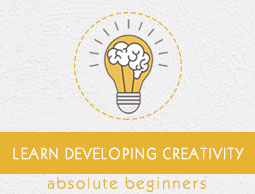
- Developing Creativity - Home
- Developing Creativity - Introduction
- Developing Creativity - Techniques
- Characteristics of Creative Thinkers
- Organizations Treasure Creativity
- Developing Creativity - Case Study
- Brainstorming
- Storyboarding
- Employee Creative Thinking
- Computer-Aided Creativity
- Software Visualization Tools
- Spatial Representation Tools
Developing Creativity - Techniques
Creativity can be enhanced through many creative techniques. In fact, creativity can not only be enhanced but also directed and focused on a branch of study or craft. For example, people in sales and marketing may utilize a different set of creative techniques, as compared to those in quality management.
Attempts to enhance the creativity in the minds of people can be put under two important classifications −
Techniques suited to enhance creativity in individuals, and
Creativity enhancing techniques for a group of individuals, which suits the needs of the working force.
Improving creativity for individuals is the act of enhancing the powers of intuition and removing mental blocks, such as fear of criticism and ridicule. At the basic level, enhancing creativity in work circles is not possible without first enhancing team building. This will bring a change in group dynamics and will pave the way for creative thoughts and innovation.
All group creativity techniques can be applied to individuals successfully. That is because Creativity is an attribute of an individual person, however it can be developed more efficiently in a group or a team because individuals need to interact with other individuals to express their creative ideas and make a practical working model based on it.

There are many computer-based creativity supporting tools, such as artificial intelligence models, information systems, etc. which can be used to enhance creativity, explore alternatives to fixed ideas and to encourage imagination.
Analytical Techniques
Analytical Techniques involve a linear approach to thoughts as in a sequence of steps to follow. A prime examples of this technique will be the Wh-question technique, where the participant is encouraged to carry his thought forward by asking him leading questions such as, Who, What, When, Where, Why and How). These questions are known to stimulate different directions of thought and help in organizing all the points of these thoughts under one context or narrative.
Intuitive Techniques
In comparison, Intuitive Techniques are less structured techniques, where the instructor has the option to skip a few steps and allow the participant to give a whole answer at the end, as per his narrative. It is often compared with the Wishful Thinking technique.
Divergent and Convergent Thinking

A third classification of creativity, apart from the Analytical Approach and the Intuitive Approach, is dependent on Divergent Thinking and Convergent Thinking.
Divergent Thinking is the process of encouraging generation of free-flowing ideas, which are then channelized in different directions depending on the requirements of the process.
In contrast, Convergent Thinking is all about filtering all the free-flowing thoughts generated during the Divergent Process and subjecting them to further filtration to single out those ideas that have a truly innovative and practical value.
Both these thinking processes are complementary and help people find numerous alternatives to seeing the same situation and finalizing the one that can be implemented. Caution must be observed in comparing divergent thinking with combination thinking, which may sound the same but are different.
In combination thinking, the conflicting ideas of people are put in a coherent context, so that everyone agrees to the final suggestion without feeling that his/her idea has been stifled or compromised with.